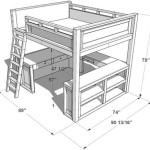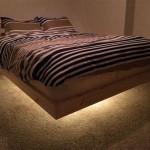Are Queen Beds Getting Smaller?
The perception that queen beds are shrinking has become a common conversation topic, particularly among consumers replacing older mattresses. While a definitive, industry-wide reduction in queen bed dimensions isn't readily apparent, several factors contribute to this perception and warrant exploration.
Key Factors Contributing to the Perception of Shrinking Queen Beds:
Several elements can influence the perceived size of a queen bed, leading consumers to believe their new bed is smaller than their old one, even when dimensions are standard.
1. Mattress Thickness Variations:
Modern mattresses often boast greater thicknesses than older models, due to advancements in mattress technology and the popularity of pillow-top and Euro-top designs. While the length and width remain standard, a thicker mattress can make the sleeping surface appear smaller. This is because the added height reduces the visible surface area when viewed from the side, creating an illusion of reduced dimensions. The increased thickness can also impact the fit of existing bedding, further contributing to the perception of a smaller bed.
2. Frame Size and Construction:
Bed frame designs vary significantly, affecting how the mattress sits and the overall perceived size. Older frames might have been built with larger internal dimensions or have a different style of mattress support, making the mattress appear larger. Modern platform beds, for example, often feature a solid surface or closely spaced slats, providing a snug fit for the mattress and potentially minimizing its visual footprint. Furthermore, the thickness of the frame itself can contribute to the perception of a smaller sleeping area.
3. Room Size and Layout:
The same queen bed can appear different sizes in different rooms. A spacious bedroom can dwarf a queen bed, while a smaller room can make it feel larger. Relocating a bed from a smaller room to a larger one can create the illusion that the bed has shrunk, even if its dimensions are unchanged. Furniture placement and the overall room layout can also influence perception.
4. Bedding and Accessories:
The type of bedding used can significantly impact the perceived size of a bed. Oversized comforters and duvets, while providing ample coverage, can visually shrink the sleeping surface area. Similarly, the use of multiple pillows and decorative throws can further reduce the visible space on the bed, contributing to the feeling that it is smaller. Fitted sheets that are too small or incorrectly sized can also create the illusion of a smaller mattress.
5. Manufacturing Tolerances and Variations:
While standardized dimensions exist for queen beds (60 inches wide by 80 inches long in the U.S.), slight manufacturing variations are possible. These tolerances, typically within a small fraction of an inch, are generally imperceptible but can cumulatively contribute to a slight size difference between mattresses. While rare, larger deviations can occur, especially with mattresses from less reputable manufacturers or those produced without strict quality control.
6. The "Breaking-In" Period:
New mattresses, particularly those made with foam or other pliable materials, often undergo a "breaking-in" period during which they settle and conform to the sleeper's body. This settling can sometimes lead to a slight reduction in overall height, which can subtly affect the perceived size, especially in comparison to an older, fully broken-in mattress.
7. Memory and Perception:
Human memory is not always reliable, and perceptions of size can be subjective. People may remember their old bed as being larger than it actually was, especially if a considerable amount of time has passed since its replacement. This nostalgic bias can contribute to the feeling that the new bed is smaller, even if it adheres to standard dimensions.
8. Rise of Split King Beds:
The increasing popularity of split king beds, which consist of two twin XL mattresses placed side-by-side on a king-size frame, may also contribute to the perception that queen beds are shrinking. Seeing the ample space provided by a split king can make a standard queen bed appear smaller in comparison, even though their dimensions remain unchanged.
9. Online Shopping and Lack of Physical Inspection:
The rise of online mattress shopping, while convenient, limits the opportunity for consumers to physically inspect and compare sizes before purchase. Relying solely on online images and dimensions can lead to misconceptions about the actual size of the bed, and the perceived difference can be amplified upon delivery.

Mattress Sizes Chart And Bed Dimensions Guide Amerisleep
How Much Bigger Is A Queen Bed Vs Double Quora

Queen Bed Dimensions A Guide Nectar Sleep

The Difference Between A Queen And King Bed Bedinabox

Full Vs Queen Size Mattress What Is The Difference Nectar Sleep

The Difference Between A Full And Queen Bed Bedinabox

King Vs Queen Size Mattress Dreamcloud

King Vs Queen Bed Size Mattress What Is The Difference Nectar Sleep

Double Bed Vs Queen What S The Difference Parachute Blog

Queen Beautyrest World Class Mattress Is Smaller Than Standard Size General Mattresses Questions Underground







